Going into winter, the concern of rising electricity costs leads many people to question the efficiency of some of their homes appliances — for example, their space heaters.
And for good reason, too. According to the Short Term Energy Outlook published by EIA, retail prices for energy are at (or near) a multi-year high.
In fact, the EIA predicts that 41% of U.S. households who heat primarily with electricity can expect to spend 6-15% more in colder winter conditions.
Given the fact that most space heaters, if not all consume about 1500 watts of electricity, it’s no wonder people are looking for more energy-efficient alternatives.
But let’s make one thing quite clear from the get-go — there is no such thing as an energy-efficient space heater.
In this article, we aim to debunk a few mainstream misconceptions, while simultaneously providing you with the best space heaters on the market today, which you can see listed down below:
- Lasko Heating Space Heater
- Amazon Basics Portable Eco-Smart Space Heater
- EconoHome Wall Mount Space Heater Panel
- Vornado VHEAT Vintage Metal Heater
- GiveBest Electric Space Heater
- Heat Storm HS-1500-PHX-WIFI Infrared Heater
- Honeywell HCE200W pace Heater
- De’Longhi Ceramic Tower Heater
- ASTERION Portable Space Heater
Table of Contents
What is An Energy-Efficient Space Heater?

Let’s clear one thing up right now — energy-efficient space heaters do not exist. Any other website claiming as such is doing one of three things: lying, conducting poor research, or both.
Why Don’t Energy-Efficient Space Heaters Exist?
Before we elaborate, it’s important that we explain how heating a room actually works.
In order for a room to stay warm (while the outside is cold), we have to keep releasing heat energy into it.
In other words, we need to add energy to the room at the same rate at which it leaves (at the very least).
The total amount of energy leaving a room is called the thermal load.
Now, a space heater’s main job is to replace any of the energy that leaves the room.
So, if your hypothetical room is losing 5,000 BTU per hour, that would be calculated as your thermal load.
Therefore, if you were wanting to keep that room warm, you would need a space heater that produces at least 5,000 BTUs to maintain that temperature. If you were wanting to get the room even warmer, your space heater would need to produce 5,000 BTUs and above.
How Is This Connected To Space Heaters?
Well, 1 watt is equal to 3.41 BTU/h.
Pretty much all space heaters you find on the market are rated at 1500 watts. Therefore, 1500 watts multiplied by 3.41 = 5,115 BTU/h.
This means, that any brand claiming their 1500 watt energy-efficient space heater will heat your room more efficiently than another 1500 watt space heater is incorrect. Both will heat your room with the exact same amount of BTUs and consume the exact same amount of electricity.
In other words, there is no such thing, as a more energy-efficient space heater.
However, just because all 1500 watt space heaters produce the exact same amount of heat, doesn’t mean they all distribute that heat equally.
If you’re looking for an “efficient” space heater (in terms of heat distribution) we recommend buying one equipped with an internal fan as well as one having the ability to oscillate.
Related Reading: 9 Disadvantages Of Geothermal Energy
How Much Electricity Do Space Heaters Use?
Have you ever wondered why every single space heater you come across on Amazon is rated at 1500 watts?
Well, according to the National Electric Code the maximum amount of power a device that continuously operates is allowed to pull from a 15A circuit is 1500 watts.
Most 15A household circuits are capable of handling up to 1800 watts. However, reducing the maximum load to 1500 watts safeguards against any potential fires.
Keeping the above in mind, the most common household space heaters draw 1500 watts and are run on average 8 hours a day. This means a 1500 watt space heater consumes 12,000Wh or 12kWh a day.
Note — the national U.S. average for electricity consumption sits at around 29kWh per day. Space heating is said to account for around 14.8% of that consumption.
Different Types Of Space Heaters
There are various different types of space heaters. Below we mention the most popular ones:
- Ceramic space heater
- Fan space heater
- Infrared space heater
- Oil filled space heater
- Propane space heater
Ceramic Space Heater
These types of heaters are equipped with ceramic plates that are attached to metal coils. As electricity passes through the metal coils, the ceramic plates are heated up, giving off warmth.
They are one of the most popular types of space heaters on the market today. What’s more, they heat up almost instantly.

Fan Space Heater
These types of heaters work in almost the exact same way as ceramic heaters.
However, instead of ceramic heating up, the metal coils heat up. A built-in fan is then used to distribute that heat into the surrounding room.
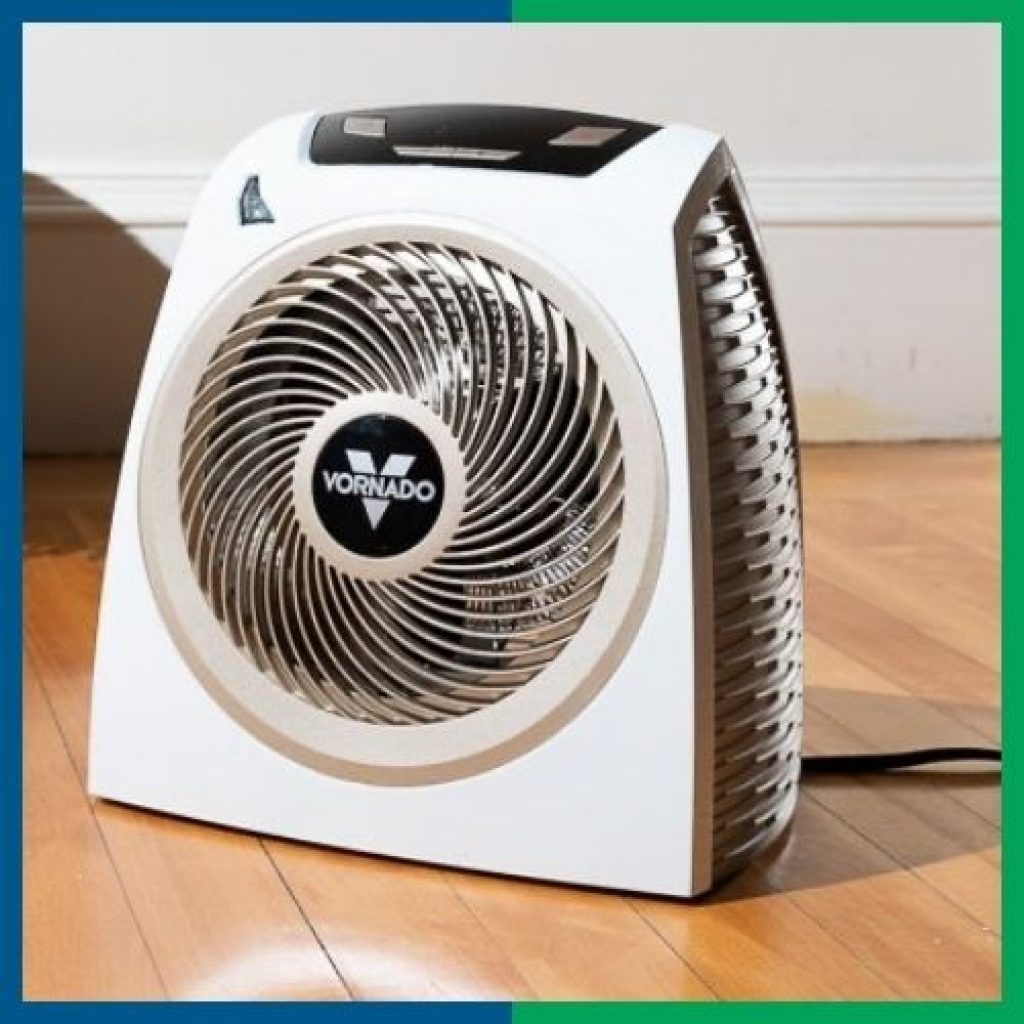
Infrared Space Heater
These work in a completely different way to the two previously mentioned heaters. However, they still require electricity to work.
These heaters warm up your space by releasing electromagnetic waves into the air. The waves then heat up the physical objects found in the room, as opposed to the surrounding air itself. The process is similar to how the sun uses radiation to heat up the earth, except infrared heaters do not emit harmful UV rays.
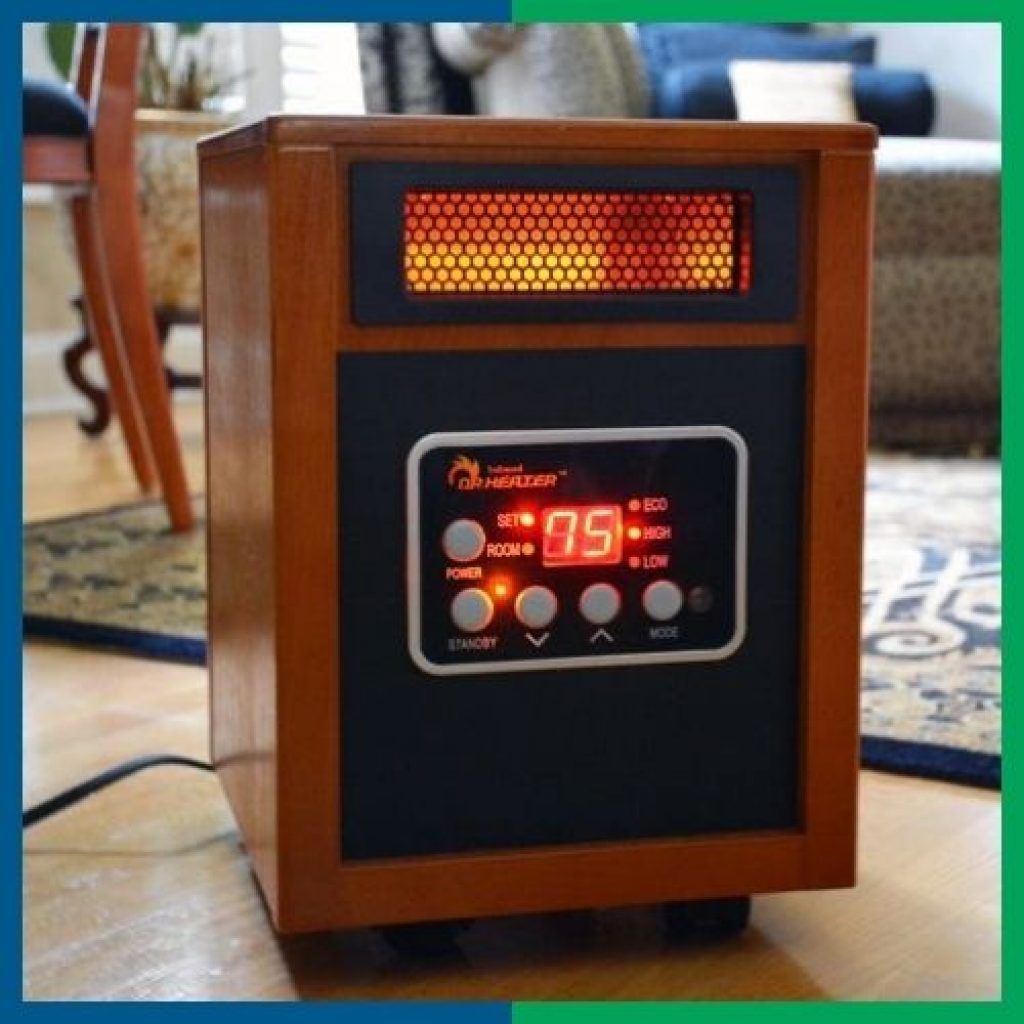
Oil Filled Space Heater
These heaters are known as radiator heaters. This is because they look very similar to the old-fashioned radiator heaters found in homes back in the day. This type of space heater is filled with diathermic oil.
The oil is heated up by the electricity and then circulated through the columns. As the columns (or fins) get hot, the temperature rises and heat is released into the air. Keep in mind that these heaters do not release Co2 as the internal oil is simply heated up (not burned).
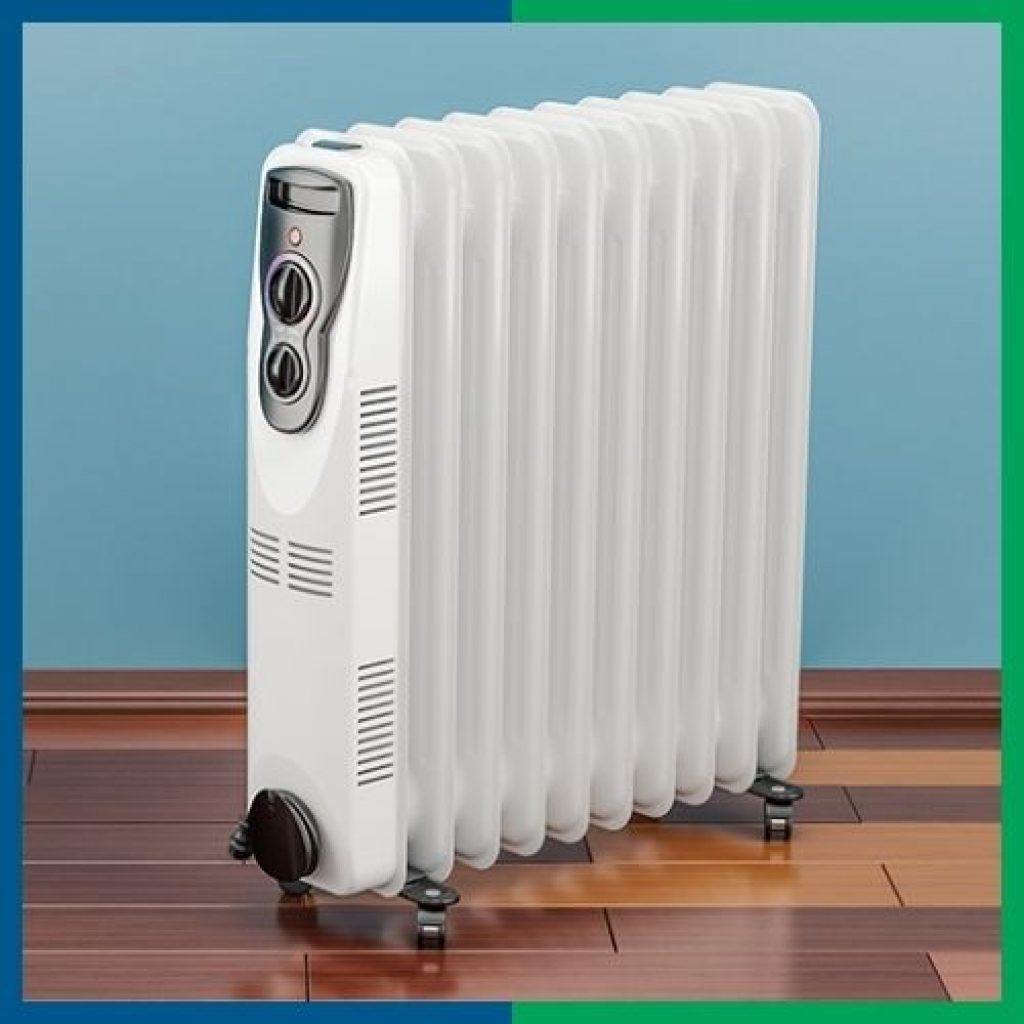
Propane Space Heater
Out of all the types of space heaters mentioned, propane heaters give off the most BTUs. They don’t use electricity as a power source. Instead, they use liquid propane to fuel their operation. These types of space heaters are highly portable as they don’t require any electrical power point for operation. Overall, propane space heaters are about 20% cheaper to run than their electrical cousins.
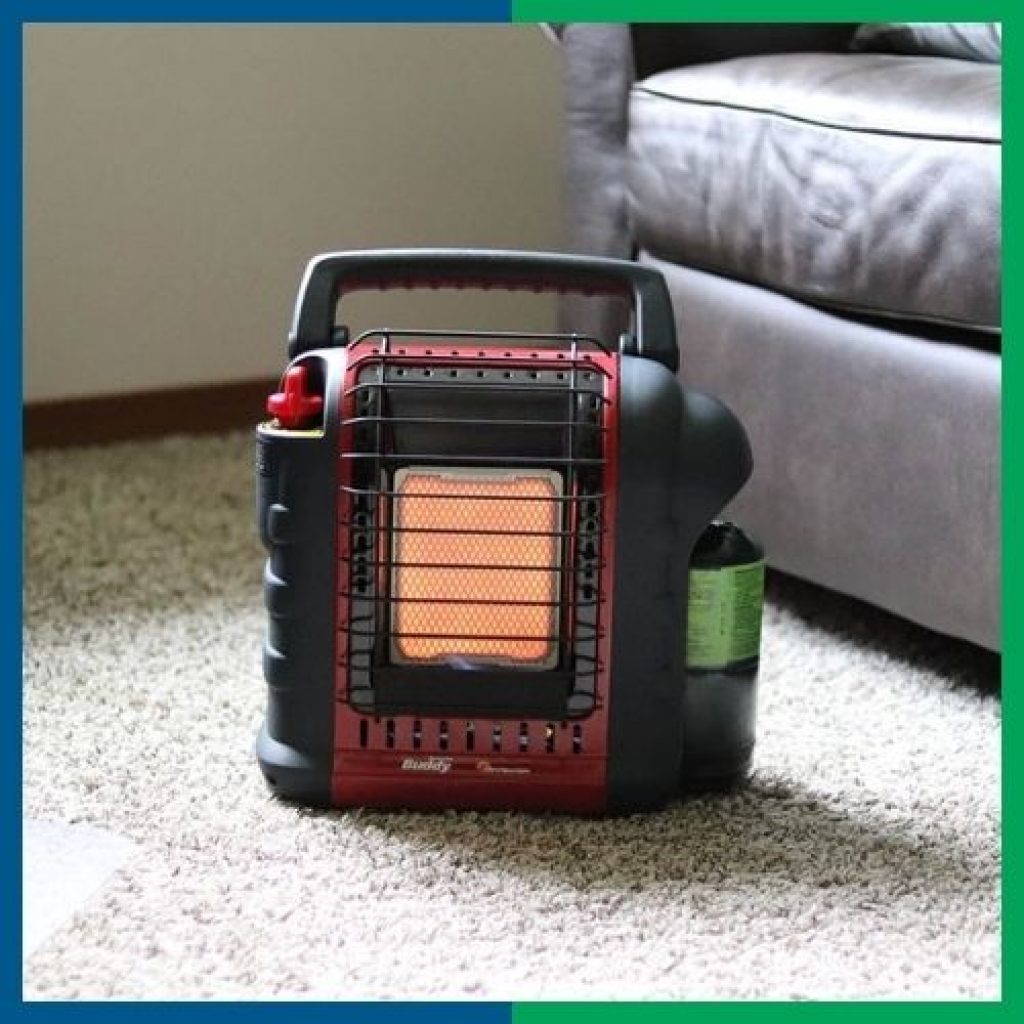
Related Reading: What Are Energy Star Appliances?
How Much Do Space Heaters Cost?
Based on our research, we found space heaters to cost (on average) around $64, with lower-end products costing $20 and higher-end products costing $190.
It’s important to note that the price of a space heater generally has no effect on how well the device heats a room.
Often times companies will market their heater as being suited for a medium-sized room. When you read the product’s specs, you’ll likely find 1500 watts – 5120 BTUs. Then another brand may state their space heater is suited for a smaller room but it’s also rated at 1500 watts – 5120 BTUs.
These two products do one in the same thing — they match the thermal load that is being lost.
Why then are two identical space heaters (in terms of heating ability) being sold at different price points?
This usually comes down to the name brand/materials being used in the product. Some use ceramic heating technology with whisper-quiet oscillation.
Generally, paying more for your space heater will get you added gadgets and convenient buttons, perhaps even a room that heats up faster.
But when it comes to actual thermal load replacement, a $20 (1500 watt) space heater versus a $190 (1500 watt) space heater does the exact same thing.
Are Space Heaters Safe?
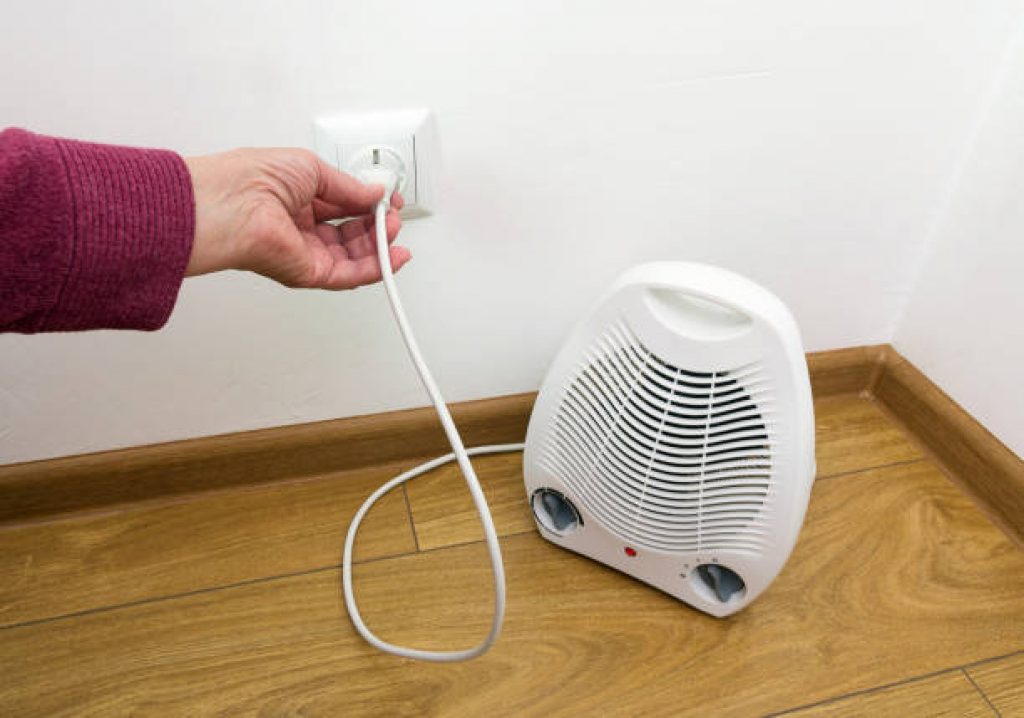
According to the National Fire Protection Association, space heaters are involved in 81% of fatal household fires.
Almost all modern space heaters have built-in safety features and are UL listed. This means, that their safety features are mandated by the U.S. government. For example, if you accidentally knock one over, the internal heating element is switched off automatically.
However, safety concerns generally arise when people put these heaters too close to combustibles or use extension cords to power them. Cheap extension cords are not capable of handling the amount of electricity that flows through them when connected to a space heater.
Running large amounts of electricity through a cheap, faulty extension cord poses a major fire hazard.
A Few Tips To Increase Safety
- Keep the heater at least 3 feet (1 meter) away from anything flammable.
- Buy a space heater with a built in thermostat and overheat protection.
- Don’t place your space heater infant of an exit.
- Plug the heater directly into the wall socket, do not use extension cords.
- Unplug and turn off your space heater when leaving the room.
Related Reading: 12 Best Smart Thermostats
By How Much Will A Space Heater Increase My Energy Bill?
When most people think about an efficient space heater, they are likely thinking about one that consumes less electricity and thus has less impact on the utility bills.
I think by now we have made it fairly clear that most space heaters consume the exact amount of electricity (1500 watts).
Determining how much a space heater will increase your electricity bill all comes down to how long you use it and how much electricity costs in your state.
Most space heaters are used for around 8 hours, while the average cost of residential electricity across the U.S is 14.12 cents per kWh.
Using a 1500 watt heater for 8 hours = 12,000Wh or 12kWh.
Therefore we can infer that using a space heater will increase your energy bill by about $1.69 every day, totaling $50.83 a month.
Keep in mind, this assumes you use the device for 8 hours every single day and average out your cost of electricity.
How Much Does It Cost To Run A Space Heater?
The cost really all comes down to the cost of electricity in your state and how long your use your space heater for.
| Name | Average retail price (cents/kWh) | Space heater cost per 1 hour | Space heater cost per 8 hours |
|---|---|---|---|
| Alabama | 13.41 | $0.20 | $1.60 |
| Alaska | 22.60 | $0.33 | $2.64 |
| Arizona | 12.31 | $0.18 | $1.44 |
| Arkansas | 11.53 | $0.17 | $1.36 |
| California | 23.26 | $0.27 | $2.72 |
| Colorado | 13.81 | $0.20 | $1.60 |
| Connecticut | 21.35 | $0.32 | $2.56 |
| Delaware | 13.91 | $0.20 | $1.60 |
| District of Columbia | 14.11 | $0.21 | $1.68 |
| Florida | 12.60 | $0.18 | $1.44 |
| Georgia | 12.34 | $0.18 | $1.44 |
| Hawaii | 33.97 | $0.50 | $4.00 |
| Idaho | 10.22 | $0.15 | $1.20 |
| Illinois | 14.39 | $0.21 | $1.68 |
| Indiana | 14.36 | $0.21 | $1.68 |
| Iowa | 12.28 | $0.18 | $1.44 |
| Kansas | 13.30 | $0.19 | $1.52 |
| Kentucky | 12.49 | $0.18 | $1.44 |
| Louisiana | 11.69 | $0.17 | $1.36 |
| Maine | 18.21 | $0.27 | $2.16 |
| Maryland | 13.66 | $0.20 | $1.60 |
| Massachusetts | 23.32 | $0.34 | $2.72 |
| Michigan | 17.62 | $0.26 | $2.08 |
| Minnesota | 13.60 | $0.20 | $1.60 |
| Mississippi | 12.39 | $0.18 | $1.44 |
| Missouri | 11.02 | $0.16 | $1.28 |
| Montana | 11.42 | $0.17 | $1.36 |
| Nebraska | 10.97 | $0.16 | $1.28 |
| Nevada | 12.67 | $0.19 | $1.52 |
| New Hampshire | 21.17 | $0.31 | $2.48 |
| New Jersey | 16.16 | $0.24 | $1.92 |
| New Mexico | 13.60 | $0.20 | $1.60 |
| New York | 20.04 | $0.30 | $2.40 |
| North Carolina | 11.60 | $0.17 | $1.36 |
| North Dakota | 10.91 | $0.16 | $1.28 |
| Ohio | 13.02 | $0.19 | $1.52 |
| Oklahoma | 11.69 | $0.17 | $1.36 |
| Oregon | 11.41 | $0.17 | $1.36 |
| Pennsylvania | 14.17 | $0.21 | $1.68 |
| Rhode Island | 22.84 | $0.34 | $2.72 |
| South Carolina | 14.09 | $0.21 | $1.68 |
| South Dakota | 12.00 | $0.18 | $1.44 |
| Tennessee | 11.70 | $0.17 | $1.36 |
| Texas | 12.81 | $0.19 | $1.52 |
| Utah | 10.26 | $0.15 | $1.20 |
| Vermont | 20.15 | $0.30 | $2.40 |
| Virginia | 11.97 | $0.17 | $1.36 |
| Washington | 10.22 | $0.15 | $1.20 |
| West Virginia | 12.89 | $0.19 | $1.52 |
| Wisconsin | 14.84 | $0.22 | $1.76 |
| Wyoming | 10.97 | $0.16 | $1.28 |
| U.S. Total | 14.12 | $0.21 | $1.68 |
Based on the above research, the most expensive state to use a space heater in is Hawaii, where it will cost you on average around $4 a day to use. The second most expensive state to run a space heater in is California averaging around $2.72 a day.
Related Reading: All you need to know about energy-efficient doors
Final Thoughts
If you’re looking for a way to use less electricity this winter, then a space heater is unlikely to be of assistance. There are other more sustainable ways to heat your homes, such as passive heating, biogas boilers, solar thermal, geothermal heat pumps, and airflow heat pumps.
In fact, if you’re interested in learning a bit more about alternative heating methods, check out our article — 10 heating methods that use no electricity.
Please feel free to ask us any questions in the comments section below, we make sure to respond to every query as soon as possible.

